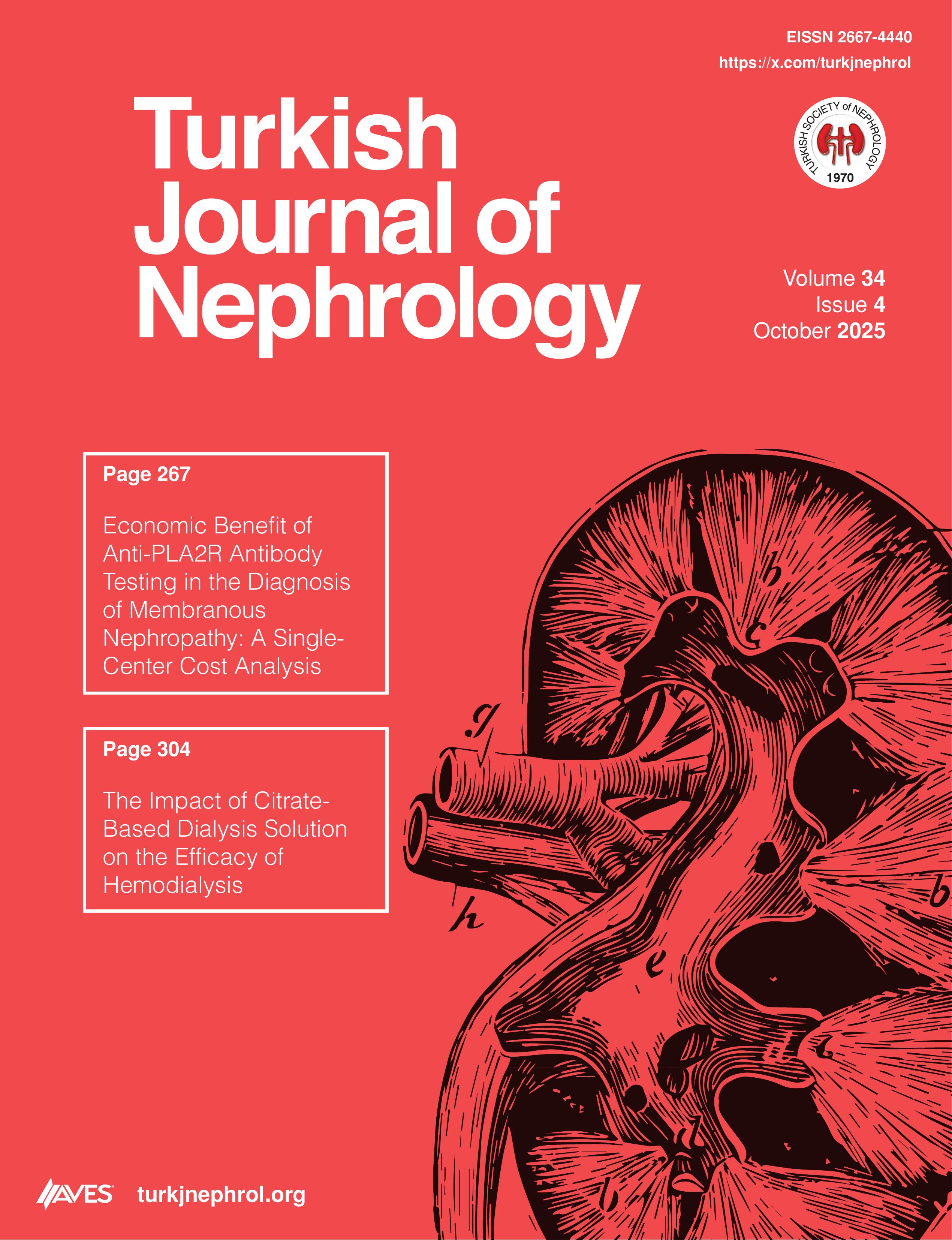Background: IgA nephropathy (IgAN) recurrence after kidney transplantation (KTx) could cause allograft loss. New biomarkers are needed to assess the risk of IgAN recurrence and allograft dysfunction following KTx.
Methods: Thirty-seven KTx recipients who underwent KTx between 2002-2011 with biopsy-confirmed pre-transplant IgAN were evaluated in this retrospective study. Demographics, pathological and clinical/laboratory findings, and biomarkers, including levels of advanced oxidative protein products (AOPP) and galactose-deficient IgA1 and 4 tag single-nucleotide variants (tSNVs) associated with IgAN, were recorded. The primary outcome was IgAN recurrence. Biopsy-proven allograft rejection (BPAR) and death-censored graft failure (DCGF) were secondary outcomes.
Results: 72.9% of patients were male. The mean age of KTx recipients was 37.4 ± 9.9 years. 45.9% of them experienced a recurrence of IgAN, during a median of 125 months of follow-up. There were more male donors in the recurrent IgAN group (P = .022). The median levels of UPCR were higher (P = .002) and estimated glomerular filtration rate (eGFR) were lower (P = .007) at the time of sampling in the recurrent group. Donor sex (male) (P = .018, HR: 3.853, 95% CI: 1.256-11.826) and eGFR at sampling (P = .039, HR: 0.967, 95% CI: 0.937-0.998) were predictors of IgAN recurrence in Cox regression analysis. Advanced oxidative protein products (median 78.4 vs 67.35 (µmol/L)) and Gd-IgA1 (median 5390.3 vs 4732.5 ng/µL) levels were insignificantly elevated in the patients with IgAN recurrence. Statistical differences were not present in terms of secondary outcomes between the patients with and without IgAN recurrence. Single-nucleotide variants were not statistically associated with the recurrence of IgAN.
Conclusions: Prospective biomarker/genetic marker studies, including large patient cohorts, are required to evaluate the risk of IgAN recurrence and allograft function after KTx.
Cite this article as: Dirim AB, Mirioglu S, Oto OA, et al. Prediction of recurrence and graft outcomes in kidney transplant recipients with IgA nephropathy: role of genetic and oxidative stress markers. Turk J Nephrol. 2025;34(2):139-148.

.png)

.png)

.png)
